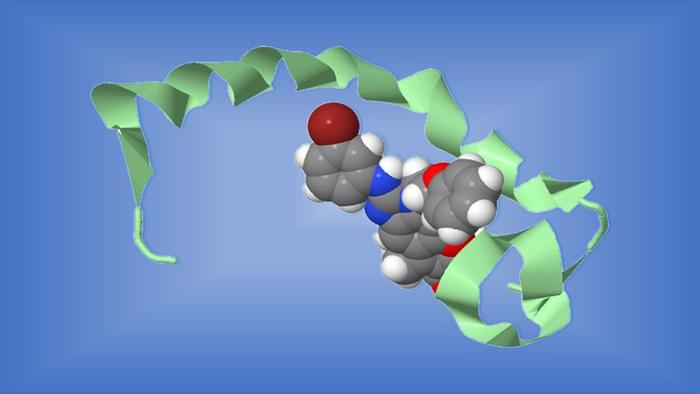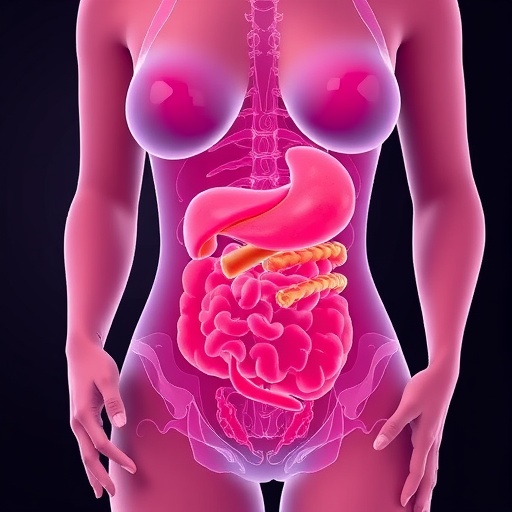Two progressively degenerative diseases, amyotrophic lateral sclerosis (ALS, commonly known as Lou Gehrig’s disease) and frontotemporal dementia (FTD, recently in the news with the diagnoses of actor Bruce Willis and talk show host Wendy Williams), are linked by more than the fact that they both damage nerve cells critical to normal functioning — the former affecting nerves in the brain and spinal cord leading to loss of movement, the latter eroding the brain regions controlling personality, behavior and language.

Credit: Public domain image via Protopedia.org
Two progressively degenerative diseases, amyotrophic lateral sclerosis (ALS, commonly known as Lou Gehrig’s disease) and frontotemporal dementia (FTD, recently in the news with the diagnoses of actor Bruce Willis and talk show host Wendy Williams), are linked by more than the fact that they both damage nerve cells critical to normal functioning — the former affecting nerves in the brain and spinal cord leading to loss of movement, the latter eroding the brain regions controlling personality, behavior and language.
Research studies have repeatedly shown that in patients with ALS or FTD, the function of TAR DNA-binding protein 43, more commonly called TDP-43, becomes corrupted. When this happens, pieces of the genetic material called ribonucleic acid (RNA) can no longer be properly spliced together to form the coded instructions needed to direct the manufacture of other proteins required for healthy nerve growth and function. The RNA strands become riddled with erroneous code sequences called “cryptic exons” that instead affect proteins believed to be associated with increased risk for ALS and FTD development.
Until now, it was unknown if this abnormality occurred early or late in the clinical courses of ALS and FTD. In a study in the February 2024 issue of the journal Nature Medicine (first posted online Jan. 25, 2024),Johns Hopkins Medicine researchers tell how they answered that long-pondered question.
“We developed a method for locating a specific cryptic exon-linked protein, hepatoma-derived growth factor-like 2 [HDGFL2], that is associated with the loss of TDP-43’s function,” says senior study author Philip Wong, Ph.D., professor of pathology and neuroscience at the Johns Hopkins University School of Medicine. “By doing so, we believe we’ve discovered a biomarker that could potentially be used to detect ALS and FTD in their earliest stages — even before symptoms appear.”
The hunt for the biomarker began with the researchers first identifying cryptic exon-linked proteins associated with TDP-43 function loss. Then, using fragments from those proteins known as cryptic peptides, they created monoclonal (laboratory-made) antibodies specific to each one. Placed into patient samples of blood or cerebrospinal fluid (the protective fluid that surrounds the brain and central nervous system), the monoclonal antibodies will seek and lock onto only the cryptic peptides for which they were designed, making those proteins detectable.
“Of all the cryptic peptides for which we made monoclonal antibodies, the one that worked best was the one designed for the cryptic HDGFL2 protein,” says study lead author Katie Irwin, an M.D./Ph.D. student at the Johns Hopkins University School of Medicine. “We used that monoclonal antibody to develop an extremely sensitive detection test for the cryptic HDGFL2 protein in body fluids.”
After validating their detection method in the lab, the researchers used it to test blood and cerebrospinal fluid samples from three different collections, encompassing people with the most common forms of familial (genetic) ALS and FTD linked to a mutation in the C9orf72 gene, sporadic (not defined as genetic) forms of ALS and FTD, and healthy controls. The collections also contained biofluid samples from patients with ALS and FTD prior to their diagnoses, meaning that the researchers could look for cryptic HDGFL2 at both presymptomatic and symptomatic stages of the diseases.
“Our test found cryptic HDGFL2 in the presymptomatic stages of patients who were genetically predisposed to ALS and FTD, and were expected to go on to develop the diseases, giving the method credibility as a potential preclinical biomarker for predicting risk of ALS and FTD,” says Irwin. “And we discovered that the test also could detect elevated levels of cryptic HDGFL2 in fluids from people with sporadic disease cases where no family history of ALS or FTD was known.”
Wong says that having a biomarker capable of detecting cryptic HDGFL2 in the biofluids of presymptomatic patients enables them to compare its findings to results using an established biomarker for ALS and FTD.
“The current biomarker for ALS and FTD looks for structural components of central nervous system [brain and spinal cord] nerves called neurofilaments that are shed into the biofluids, but only after symptoms begin appearing,” explains Wong. “If we use it and our cryptic HDGFL2 biomarker to determine both presymptomatic and symptomatic ALS and FTD, we can map the course of these diseases and obtain greater insight into each of their stages.”
Wong says that knowledge could help steer patients into clinical trials for new ALS and FTD therapies earlier and “at a time when it might truly make a difference.”
Irwin says she and her colleagues are gathering biofluid samples from around the world from patients with FTD, genetic ALS and sporadic ALS.
“We hope to support the effectiveness, reliability and sensitivity of our biomarker by testing it on thousands of patient samples, and once validated, encourage its use as a clinical tool,” she says. “We also plan to explore the use of our biomarker for determining the effectiveness of therapies in preclinical ALS and FTD by looking for reductions in cryptic HDGFL2 levels — and restoration of TDP-43 function — after treatment.”
Along with Wong and Irwin, the members of the study team from Johns Hopkins Medicine are Kyra Bowden, Kerstin Braunstein, Koping Chang, Pei Jasin, Jonathan Ling, Abhay Moghekar, Esther Oh, Irika Sinha, Bryan Traynor and Juan Troncoso. Other team members are Dan Bartlett and Denitza Raitcheva from Biogen, James Berry and Mark Garret from Massachusetts General Hospital, and Timothy Miller from the Washington University School of Medicine in St. Louis.
Funding for the study came from National Institutes of Health grants R01NS095969, UH3NS115608 and R33NS115161; the Robert Packard Center for ALS Research at Johns Hopkins; the Target ALS Foundation; ALS Finding a Cure; the ALS Association; U.S. Food and Drug Administration grant 1U01FD008129; the Alzheimer’s Association; the Institute for Data-Intensive Engineering and Science; the Intramural Research Program of NIH (National Institute on Aging/National Institute on Neurological Disorders and Stroke grant 1ZIAAG000933); and the Karen Toffler Charitable Trust.
Ling and Wong are inventors on a provisional patent application submitted by The Johns Hopkins University that covers the use of TDP-43-associated cryptic exon-derived neoepitopes as biomarkers. Traynor holds patents on the clinical testing and therapeutic intervention for the hexanucleotide repeat expansion of C9orf72. Bartlett is an employee and shareholder of Biogen. At the time of the study, Raitcheva was an employee and shareholder of Biogen.
The other study authors do not have financial or conflict-of-interest disclosures.
Journal
Nature Medicine




